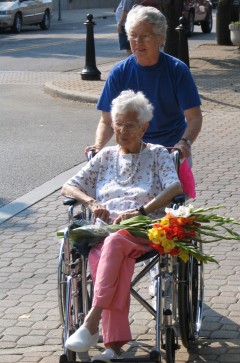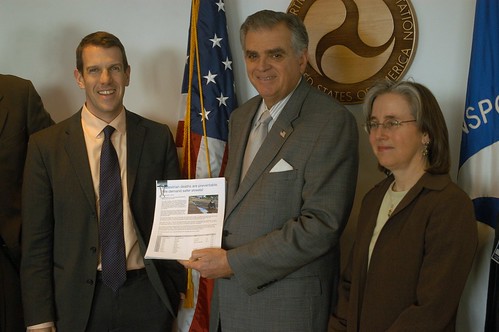 |
| DSC_0348 Originally uploaded by Transportation for America |
| Secretary Ray LaHood holds the petition from Transportation for America and thousands of supporters while flanked by T4 America campaign director James Corless, left, and Barbara McCann of the National Complete Streets Coalition Monday afternoon at USDOT |
Just a week after the release of Dangerous by Design, our report on the epidemic of pedestrian deaths, Transportation for America and six of our key partners had the opportunity to meet with Transportation Secretary Ray LaHood. During the meeting yesterday, we delivered a petition with thousands of signatures urging him to make pedestrian safety and complete streets a USDOT priority.
He responded with resounding support, telling T4 America, “the right of way doesn’t just belong to cars — it belongs to pedestrians and bicyclists as well.”
He added, “the DOT Safety Council is going to look at this report and work with advocacy groups to ensure our streets are as safe as possible.”
After Dangerous by Design was released last Monday, we asked for your help sending a strong message to Transportation Secretary Ray LaHood that safer, complete streets must be a priority at USDOT. The response was fantastic. In just five days, we received more than 4,100 signatures from people in 47 U.S. states on a petition to Secretary LaHood.
Due in part to the massive media coverage that Dangerous by Design received last week from coast to coast, we were able to set up this meeting with the Secretary and three of his top deputies to present him with the petition, talk about the report and discuss the urgency of pedestrian and bicycle safety. With the petition and a copy of Dangerous by Design in front of him, LaHood listened intently as T4 America’s James Corless and others talked about the epidemic of preventable deaths — and what we can do to turn the tide and keep pedestrians safe.
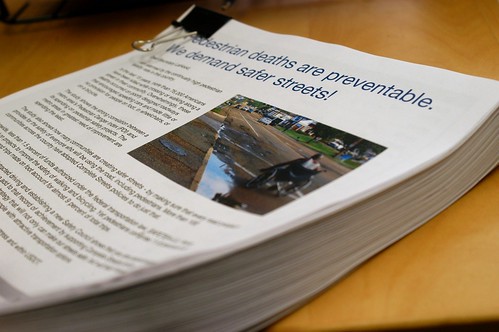 |
| DSC_0334_2 Originally uploaded by Transportation for America |
Secretary LaHood was hopeful that federal transportation policy can better accommodate all users and keep them safe, and that now is the right time to make that change.
“I think this Congress gets it now,” Secretary LaHood told us. “Certainly in part because of advocates like you.” He acknowledged that making the streets in our communities safe and accommodating for everyone dovetails well with the Obama administration’s focus on livability.
He stressed that safety is the top consideration for everything they do at USDOT and urged T4 America to take the report directly to Congress as they continue discussions on the full six-year transportation bill. He also asked for more copies of Dangerous by Design (on their way, Mr. Secretary!)
Transportation for America was joined in the meeting by partners from America Bikes, the American Public Health Association, AARP, the National Complete Streets Coalition, the Safe Routes to School National Partnership and Smart Growth America.
View the entire set of photos from the meeting in our Flickr stream, and check back here later today for some more comments on the meeting.
 |
| DSC_0376 Originally uploaded by Transportation for America |
| Barbara McCann of the National Complete Streets Coalition, right, tells Secretary LaHood a story from Cary, Illinois about Nate Oglesby, a young man who was killed in 2000 on his bicycle because he was crossing the only bridge over the Fox River — one that had no safe lanes for pedestrians. (Two other teens had died there previously.) Lanes were eventually added to the bridge at significant cost, but as McCann noted, “it would have saved money and lives to have just done it right in the first place.” Complete Streets policies would ensure that the needs of all users are considered during the planning phase of a project. |




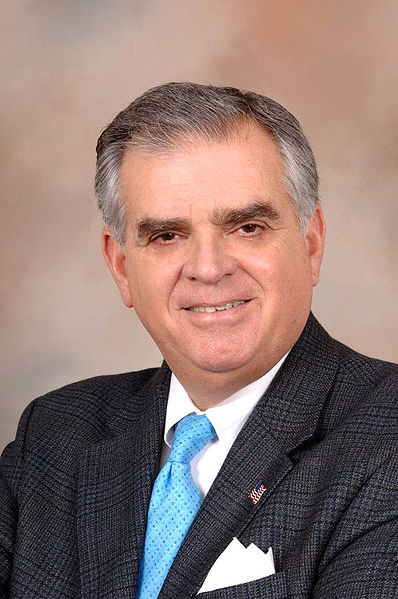



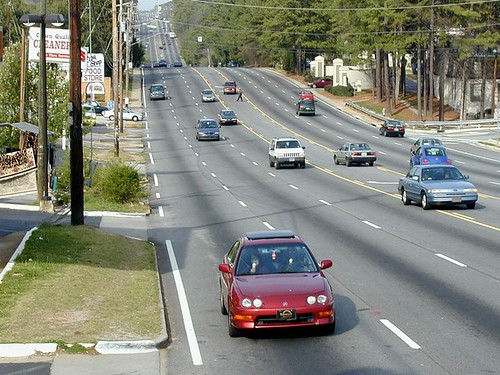
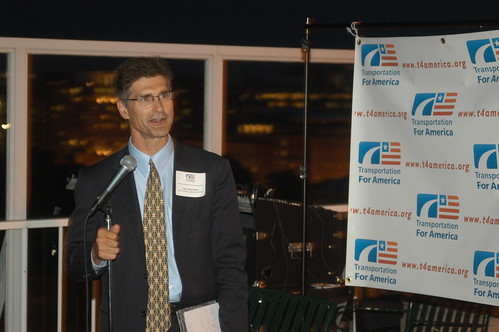

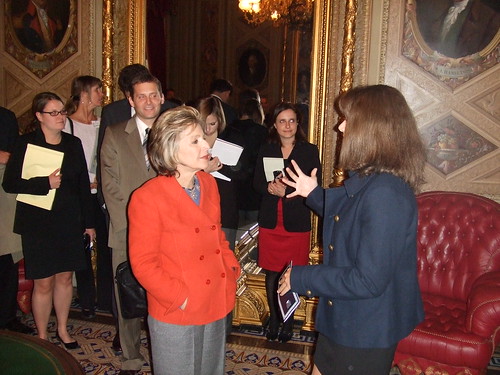
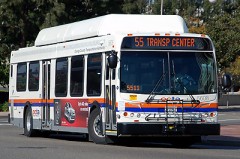 A recent California Supreme Court decision could restore billions in funding for public transportation in the nation’s most populous state.
A recent California Supreme Court decision could restore billions in funding for public transportation in the nation’s most populous state.




